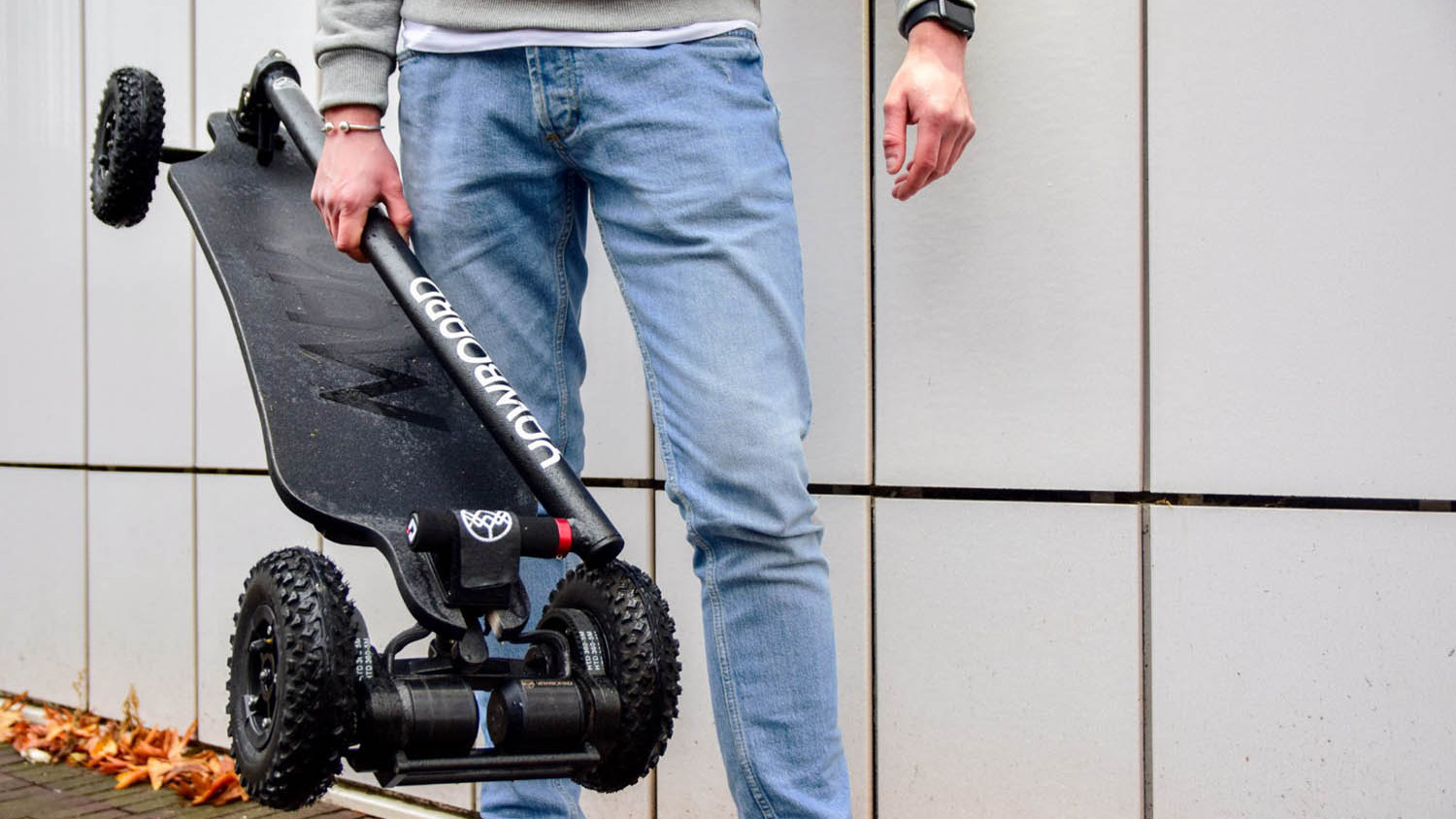Part electric scooter, part skateboard, Yawboard hopes to transform personal transportation. Claudia Schergna meets the start-up’s founder Ray Reynolds to learn more about a fun new way to commute
It’s 8:30 am, public transport is packed, and petrol for your car (if you have one) plus congestion and parking charges will cost you an arm and a leg. On top of this, you feel guilty about your carbon footprint.
Yawboard, a team of skateboarders, surfers and engineers, has made it their mission to tackle this common problem and make commuting enjoyable. Neither a scooter nor a skateboard, but more like a combination of the two, Yawboard is designed to be safe, sustainable and, most of all, fun. The riding style can be personalised and it doesn’t require any particular athletic skill. Rather than turning a steering wheel, it turns when you lean on the board.
“We want to recreate the feeling of snowboarding on a practical vehicle that you can use in cities,” says Ray Reynolds, founder of Yawboard and himself a former snowboard instructor.
The idea behind Yawboard was to combine the riding style of a skateboard with the convenience of an e-scooter: “Yawboard is safer than normal electric scooters, firstly because you’ve got four wheels, [so when] you’re going over bumps you are a lot more stable. So, you’re less likely to fall off,” Reynolds explains.
“The second reason is because of the way you’re standing, which is sideways, you are able to look behind to see the traffic behind you.”
Yawboard is not just a commuter vehicle, either. As the world’s first ‘carving scooter’, it allows advanced riders to do flips and tricks and can be used without the handle as an electric skateboard, capable of handling both on- and off-road terrains.

Entrepreneurial flair
The product was developed over the past six years, taking advantage of the Solidworks Entrepreneurs programme, to which Reynolds was introduced via Solidworks reseller Solid Solutions.
As Reynolds explains, the programme gave his design team access to the full suite of Solidworks tools and products, as well as technical support, at a time when the start-up could not yet afford it. The products have provided not only effective design tools, but also visualisation capabilities, which were valuable in making compelling presentations to crowdfunders and investors.
“We used Solidworks to create photorealistic renders through Visualize to display what we thought the product was going to look like and to gauge interest,” says Reynolds.
“Without that, we wouldn’t have been able to commit to the next stages and put money towards things, but because of this, we had the validation and the confidence that we had a good product.”
Once the project reached its final stages, Yawboard was prototyped using a Prusa Mark3 3D printer and a CNC milling machine: “After all the prototypes and testing, the final product didn’t look too similar to the first one. We built it and tested it in as many conditions as possible, and then we changed what we needed to change and repeat. That process went around seven times until we had a product that we thought people would enjoy.”
Sustainable ride
During manufacturing, sustainability was a priority, says Reynolds. The Yawboard’s deck is made from wood, while most other parts are aluminium, both sustainable materials.
Other parts of the board, such as the big battery at the bottom, Reynold admits, are not as easy to recycle, but he’s hopeful: “Recycling is improving for batteries. And they have a long enough life that you’re going to get enough use out of [a battery] before it dies.”
The Yawboard’s environmental credentials are also enhanced through its regenerative power system. When the user activates the brakes, the magnetism is reversed in the motor, which puts power back into the battery. The hardest part, Reynolds says, was manufacturing at scale, going from prototype to having to deliver 100 products globally during the pandemic. And that was without being able to visit the factory, he adds.
The team is now looking to expand its worldwide network of distributors and develop cheaper and lighter products, expanding its offer to a wider range of boards that makes the daily commute more fun for everyone.








